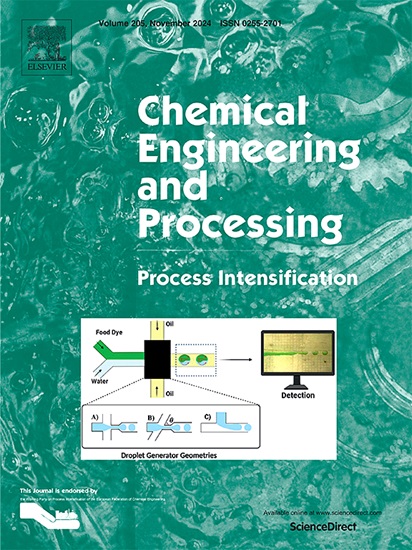Research on the enhancement effect of ultrasonic field combined with monoclinic FeS on arsenic removal behavior
IF 3.8
3区 工程技术
Q3 ENERGY & FUELS
Chemical Engineering and Processing - Process Intensification
Pub Date : 2025-03-09
DOI:10.1016/j.cep.2025.110266
引用次数: 0
Abstract
Arsenic is a toxic element in industrial wastewater. The removal of arsenic by sulfide method has been a prominent research topic in the academic community. In this paper, arsenic was removed from arsenic-containing wastewater by ultrasound intensification combined with monoclinic FeS. This method avoids the common problems of H2S gas spillage and inefficiency in the sulfide method, and has the advantages of being clean and efficient. The effects of S/As molar ratio, initial temperature, reaction time and ultrasonic power on arsenic removal were studied. Under the optimum condition, the arsenic concentration was reduced from 1889 mg/L to 0.32 mg/L, and the arsenic removal rate reached 99.98 %. The precipitation after arsenic removal was characterized by X-ray diffraction (XRD), Scanning electron microscope-energy dispersive spectrometry (SEM-EDS), X-ray fluorescence spectrum analysis method (XRF) and X-ray photoelectron spectroscopy (XPS) to analyze the precipitation phase, surface morphology, element content and chemical composition. A high-speed camera was used to observe the effect of ultrasound on the kinematic behavior of monoclinic FeS.

求助全文
约1分钟内获得全文
求助全文
来源期刊
CiteScore
7.80
自引率
9.30%
发文量
408
审稿时长
49 days
期刊介绍:
Chemical Engineering and Processing: Process Intensification is intended for practicing researchers in industry and academia, working in the field of Process Engineering and related to the subject of Process Intensification.Articles published in the Journal demonstrate how novel discoveries, developments and theories in the field of Process Engineering and in particular Process Intensification may be used for analysis and design of innovative equipment and processing methods with substantially improved sustainability, efficiency and environmental performance.

 求助内容:
求助内容: 应助结果提醒方式:
应助结果提醒方式:


